#The Satanic Panic of the 1980s
Explore tagged Tumblr posts
Photo
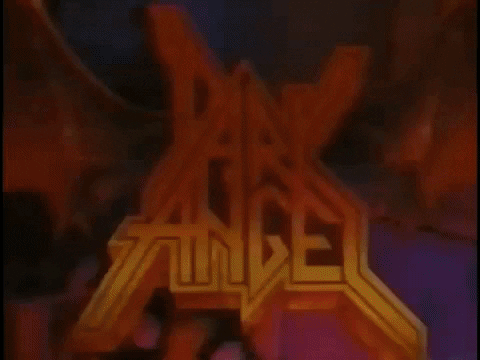


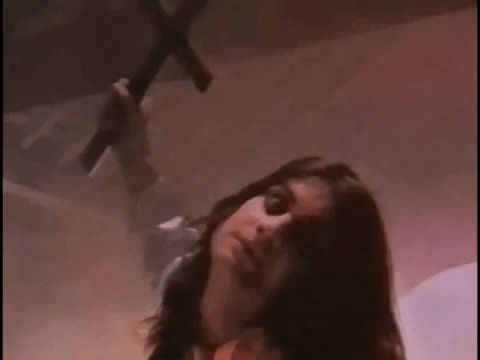
𝔖𝔞𝔱𝔞𝔫𝔦𝔠 𝔓𝔞𝔫𝔦𝔠: 𝔚𝔞𝔯 𝔒𝔫 ℌ𝔢𝔞𝔳𝔶 𝔐𝔢𝔱𝔞𝔩 𝔦𝔫 յգՑօ’𝔰
#Satanic Panic#War On Heavy Metal#1980's#80's#80s#cover album#dark angel#destruction#slayer#cover art#Ozzy Osbourne#king diamond#forbidden#scream bloody gore#death#death metal#thrash metal#live undead#my gif#gifs#gif#my edit
413 notes
·
View notes
Text
Of all the things that would come back, Y2K was my least expected pick for 2024
#crowdstrike#it#the IT#global IT outage#this is what they said Y2k was going to be like#what's next another Superstorm Sandy?#another Satanic Panic on the 1980s level?
32 notes
·
View notes
Text
Skullduggery (Video, 1983)
You can watch this strange horror film made during the Dungeons & Dragons moral panic here.
You can watch Noah Antwiler's review of it here.
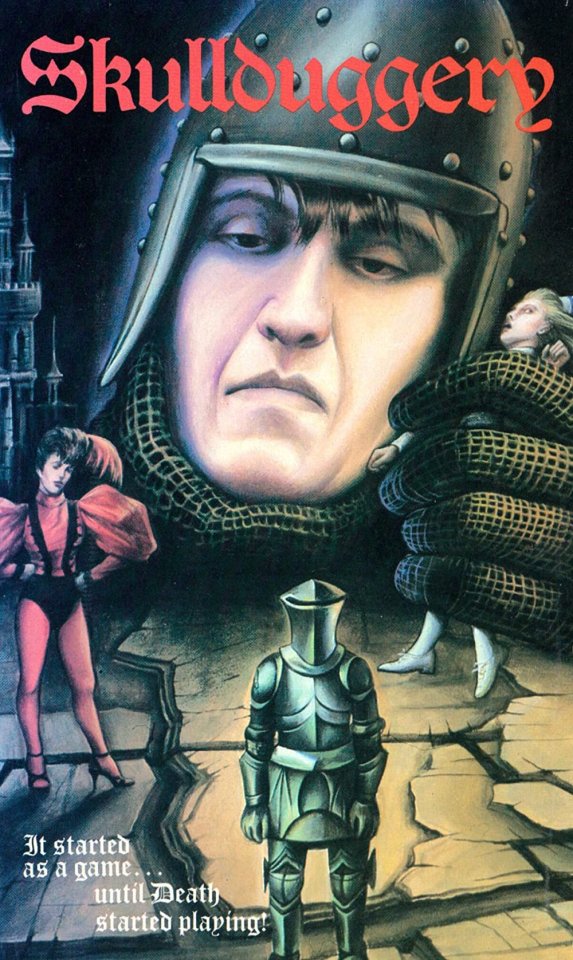
#internet archi#movie#movies#film#films#horror#horror movie#horror movies#horror film#horror films#weird movies#weird film#satanic panic#1983#1980s#80s
11 notes
·
View notes
Text



None of these men ever worshipped anything more than a bag of Fritos, a sixer of Bud Dry, and the Superbowl.
#satan#satanism#satanic panic#80s#1980s#hail satan#80s fashion#80s aesthetic#vhs#vhs aesthetic#nostalgia
10 notes
·
View notes
Text
Getting into D&D in the 70s/80s after hearing about it through the satanic panic controversy must’ve been so funny.
Like, imagine you’re some edge-lord, occult-obsessed goth teenager or early twenty-something in the 1980s, and you hear the rumours about this game that can summon demons, drive people to commit murder and/or kill themselves and was trying to get banned by pearl-clutching Christian parents across the nation. Like the Ouijia board on steroids. So of course you want in on that super fucked up hardcore demonic occult shit, you sign up for the nearest D&D group in your area, you show up, and then it’s just. A bunch of dorky fantasy nerds playing a board game where they act out an off-brand Lord of the Rings story with occasional dice rolls and improv comedy.
#dungeons and dungeons#d&d#Dungeons & Dragons#ttrpg#fantasy#role playing#tabletop roleplaying#1970s#1980s#the satanic panic#satanic panic#suicide mention#murder mention#death mention
11 notes
·
View notes
Text
youtube
You're metal's chosen warrior!
#Fastway#heavy metal#80s#1980s#80s music#trick or treat#music#Fast Eddie Clarke#Satanic Panic#Youtube
2 notes
·
View notes
Photo


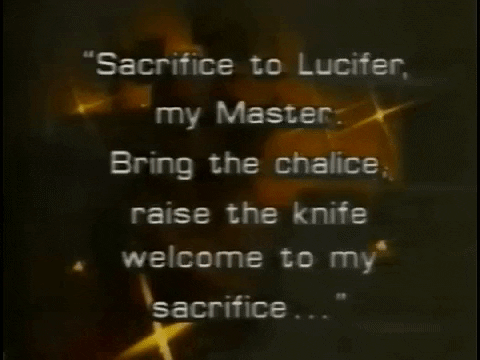

𝔖𝔞𝔱𝔞𝔫𝔦𝔠 𝔓𝔞𝔫𝔦𝔠: 𝔚𝔞𝔯 𝔒𝔫 ℌ𝔢𝔞𝔳𝔶 𝔐𝔢𝔱𝔞𝔩 𝔦𝔫 յգՑօ’𝔰
#king diamond#text#Lyrics#venom#Sacrifice#metal#heavy metal#Genre: Black/Speed Metal#black metal#80's#80s#Satanic Panic#War On Heavy Metal in 1980's#War On Heavy Metal#1980#my gif#gifs#my edit#Genre: NWOBHM/Heavy Metal Doom Metal#Genre: NWOBHM/Heavy Metal Speed/Black Metal#Themes: Satan Hell Death Women Metal
181 notes
·
View notes
Text
youtube
Satanic Panic in the 80s
Sadly, bogus conspiracy theories like this still make the rounds. Essay version at Satanic Panic of the 80s: The Myth of Cult Ritual Abuse.
From the video:
The “Satanic Panic” of the 1980s in the U.S. stemmed from unfounded fears of satanic ritual abuse, leading to widespread moral hysteria and wrongful convictions based on coerced testimonies. Public anxiety intensified due to sensational media coverage and dubious investigative practices, ultimately revealing society’s vulnerability to misinformation and the consequences of moral panics.
0 notes
Text
Hell's Bells: The Dangers of Rock 'N' Roll (Videos, 1989)
The Christian anti-rock-n-roll documentary. You can watch it here.
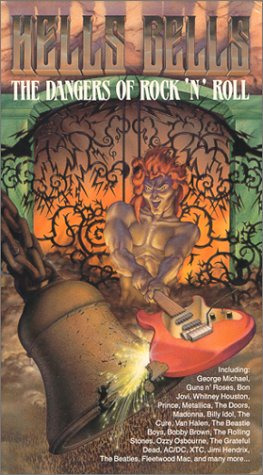

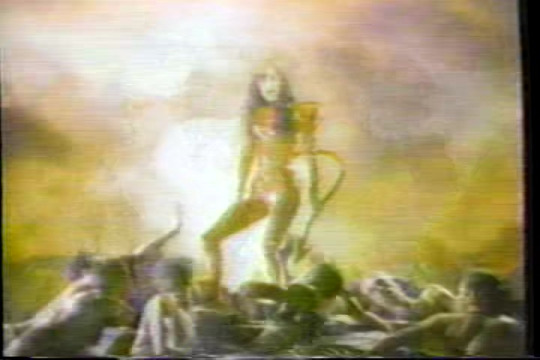

#internet archive#video#videos#vhs#vhs tapes#vhs aesthetic#christian media#satanic panic#rock music#rock n roll#rock 'n' roll#rock and roll#rock and/or roll#1989#1980s#80s#cw christianity#tw christianity
10 notes
·
View notes
Video
youtube
Documentary: What was the Satanic Panic? (2020)
0 notes
Text
The Big "Is RAMCOA Antisemitic?" Debunk Post
Because I have to stay relevant, here we go
Let's start with a little speech. A bit of positivity.
You know, there is something good to said about this RAMCOA antisemitism discourse. The majority don't seem to be falling for it at all, and many are becoming more educated about the panic, RAMCOA/OEA and its history (the good and the bad) than ever before
RAMCOA/OEA a very real issue that deserves awareness and advocacy, and so far, I've noticed a massive surge in members of the community researching the ISSTD and the OEA sig's work.
It has brought antisemitism into light in a way that hasn't really been talked about on a large scale in system communities, and most don't know ever existed. Many, genuinely, had no idea that the satanic panic was antisemitic in these ways, and it's putting a lot of pieces together and adding a lot of context that'll help us grow and be better people going forward.
It's been really nice seeing such a positive shift to open, educational conversations, with people genuinely wanting to know the truth and unlearn harmful associations.
SAS stands with RAMCOA and OEA survivors.
So let's get into it.
SRA and The Memory Wars, lasting results
SRA started with Michelle Remembers, a book, in 1980. It resulted in thousands of unsubstantiated claims of abuse, daycare hysteria, set CDD research and OEA abuse back decades, affected millions, and to this day conjures images of cloaked figures sacrificing children.
The ISSTD was formed in 1984, amid the panic, with the goal of quickly developing an effective treatment and documenting the disorder as thoroughly as possible. Many mistakes were made. Clinicians aren't immune to societal panics, and lessons were learned the hard way.
I think an important distinction that many have forgotten is that the ISSTD's principal controversy isn't SRA. SRA didn't start or end with the ISSTD.
While the “Satanic Panic” played out in courts and in mass media, the ISSTD entered “The Memory Wars”, and it's this that they're most controversial for. False, implanted, and fostered memories weren't solely related to SRA. It was used to discredit all types of abuse and violence and is still used to this day to silence victims.
By the 1990s, therapists were being sued, licenses were being revoked, and members were fleeing the ISSTD. The False Memory Syndrome Foundation wouldn't be created for another couple of years, but that doesn't mean its founding members weren't already wreaking havoc.
The FMSF would be created in 1992, and their bigger and better attacks on therapists were brutal and persistent. The legal battles would be especially effective at causing therapists to refuse to work with victims of abuse.
Research on ritual abuse, CDDs, and repressed memories came to a grinding halt.
The Satanic Panic eventually fell into relative silence by 1995, but false memories lived on, loud and cruel.
The FMSF would eventually begin to write college textbooks for the next generation of clinicians. It would survive until 2019.
The ISSTD is still trying to regain its membership. It's only recently that they reached 1500, the highest since 1993.
Antisemitism, blood libel, and the satanic panic
If you're confused about how everything is related, I'm going to make it very simple so you grasp the basic idea.
This is not a history lesson.
Blood Libel, or ritual murder, is the idea that Jewish people sacrificed Christian children in religious rituals. Cloaked figures performing rituals and killing children and animals. The same thing you picture when you think of Satanists and rituals.
For those who recognize the connection (racists), this fuels their sentiments and creates a language for them to speak to each other.
It is true, a basic fact, that for many people, Satanists are anyone who doesn't worship the Christian god. Including and especially Jewish people.
SRA and RAMCOA
Depending on who you ask, the connection is either that:
MYTH: the ISSTD originally called their RAMCOA sig (Special Interest Group) the SRA sig. FACT: The RAMCOA sig, one of twelve ISSTD sigs, was created in 2008. There was never any kind of satanic ritual abuse group or association within the ISSTD.
FACT: Ritual abuse, the RA in RAMCOA, still has ties to SRA and brings to mind everything from the panic. ALSO FACT: That's why the ISSTD has renamed it to the OEA sig.
Hopefully we're all on the same page now.
Who's Grey Faction?
Grey Faction is a group of the TST (The Satanic Temple) and is closely related to the FMSF. While the FMSF generally attacked all types of abuse, GF, being related to Satanism, is focused on recovered memories and the (still alive) satanic panic. They believe that all reports of false memories supports satanic panic conspiracy theories. They continue the FMSF's work.
How did we get here?
Well, TST and GF are on reddit. Syscringe is on reddit. And now syscringe is here.
This is what syscringe bot says every time RAMCOA is brought up.


That link goes to Grey Faction.
So is RAMCOA Antisemitic?
Kind of yeah. It was a really good move of the ISSTD to change the name to OEA sig. They talk about the association on their website and stated they wanted to get away from that. No one won the satanic panic. Ritual abuse is real, but its history is tainted.
The discourse around RAMCOA isn't about helping Jewish people. At least, not for the people pushing the false connection that the ISSTD started and continues to maintain the panic to this day.
It's about discrediting the ISSTD and the trauma theory. It's about silencing victims, even Jewish survivors.
It's about ignoring that the ISSTD is making moves in the right direction.
It's about continuing the idea that false memories exist and that trauma memories can't be trusted or taken at face value. It's about downplaying the depravity of abusers and the lengths they'll go to.
I want to finish this post with a letter from a very dear friend. It's not a mod on this blog, simply someone wishing to stay anonymous.
Uplift Jewish Voices
Hello, I’m Noam, an ethnic and religious Jew. I face antisemitism on the daily and deal with having DID. I am not a RAMCOA survivor, but I have a number of friends who are. Today I’m here to talk about the recent discourse going around regarding whether claiming to have RAMCOA experiences is inherently antisemitic. TLDR: no.
Let’s start with understanding why people think this. The term ritual abuse originated from the term satanic ritual abuse and is often associated with the satanic panic. The satanic panic in the 80s and 90s was extreme and yes, did involve a lot of antisemitic conspiracy theories. People would suggest certain symbols or music or groups of people (often vague, or calling it a nationwide conspiracy) were “brainwashing” these “good Christian children” into satanic practices or straying from rigid Christianity. Jews are often stereotyped as Satanic, controlling things, and murdering and cannibalizing children/babies.
Ritual abuse nowadays is often still associated with Satanic cults, but it has a much broader and less accusatory definition in medical/therapeutic spaces. Per Schröder et al. (2018), “ritual abuse occurs when a religious, political, or spiritual authority uses its position of power and the sovereignty to interpret the respective belief system to manipulate and dominate its followers.” Some examples include repeated forced creation of CSEM, religious and other types of cults (yes, including satanic, but also Christian and other religions), and being forced to abuse others (Schröder et al., 2018). Trafficking is also a type of organized abuse. We know these types of abuses happen. But given the history of RA as a term and the harm claims of SRA caused, how does one determine whether something is a conspiracy theory or actual trauma someone experienced?
This page by the European Commission does a good job of talking about identifying conspiracy theories and the harm they do. I won’t recount the whole thing, but here are some basic things they state conspiracy theories have in common: a secret plot, a group of conspirators, unfounded/unreliable evidence, suggesting everything is connected, dividing the world into good people and bad people, and scapegoating certain groups (“Identifying Conspiracy Theories,” 2020).
What makes (many) stories of RAMCOA different from antisemitic conspiracy theories? I’m glad you asked!
• The secret plot in conspiracy theories often involves a large group of people in on some secret changing something about the world or identifying a secret thing that must have happened to lead to unfortunate current events. RAMCOA tends to stem from people or organizations working on a much smaller scale, and the things they are doing mostly affect the person/people experiencing this abuse. Abusers may try to instill in victims a sense that they control a lot about the world and the events that happen within it, but they don’t.
• A big question I like to ask people who spout conspiracy theories is “who is they (the group of conspirators)?” If they is some generic big bad, the government, “elites” (see the AJC’s Translate Hate Glossary section titled “cosmopolitan elite”), or vague and unknown, it’s usually a dogwhistle for Jews. The person themselves may not realize this, but perhaps they never looked further into the evidence behind these accusations and who those being accused are. RAMCOA perpetrators are not vague to their victims. They often have familial ties or other close relationships with them that allow the abusers to gain their victims’ trust (Schröder et al. 2018). The things they do to abuse people and the methods they use are not vague or mysterious actions to achieve an end. There are specific actions and tactics that cults and authority figures use for RAMCOA.
• Whether evidence is unfounded is a harder thing to distinguish, since many survivors of RAMCOA cope using dissociation or have an amount of dissociative amnesia around traumatic events (Shröder 2018). The Europe Commission suggests three main things to check for in regards to evidence about a claim. Who is the author and why are they writing this? Is the source reliable/reputable? Is the tone and style “balanced and fair or sensationalist and one-dimensional?” (“Identifying Conspiracy Theories,” 2020). I also like to think about, especially with regards to abuse survivors, if this is a conspiracy theory, why are they telling me the things they’re telling me? Most RAMCOA survivors I’ve met avoid talking about their trauma and are more focused on figuring out if what they experienced is real and how to heal from it. They are not trying to convince me of something; they are just sharing their story and looking for support.
• RAMCOA victims I’ve talked to, particularly those with DID, also have a more complex view of their abusers or are trying to come to terms with all the bad things someone they admired, trusted, and/or loved did. Conspiracy theorists tend to separate people into conspirators or innocents. There is no middle ground. Healing for a lot of abuse victims involves realizing that good people can do bad things and bad people can do good things; the world is not black and white.
• Scapegoating often involves generalizing and demonizing certain people or groups of people. I find a lack of seeing these “others” as human or wanting anything other than a single, unified goal. It also tends to involve assumptions much more than any personal experience. Anyone with even the slightest connection to a certain ideology is evil. RAMCOA often involves many victims, many of whom understand that other people involved with the organization that hurt them are also victims or have been scared or brainwashed into further perpetuating abuse.
• Also, while satanic panic was largely about going against Christianity, many religious cults are associated with particular sects or communities within Christianity, and they use certain ideologies within the group to deter people from leaving or reporting abuse. Perpetrators claim some sort of punishment or betrayal will be involved in these actions.
Anyways, I want to put emphasis on healing in RAMCOA survivors, where many of the points and purposes of conspiracy theories are antithetical to such a process. People should be allowed to find support, community, and reliable resources about what they have gone through (if it is physically/mentally safe for them to do so). Please do not insist that these traumas aren’t real on the basis of antisemitism from the satanic panic. The survivors I’ve met who talk about parts of their trauma are working hard to come to terms with it themselves and how to cope, and while they may be angry and upset towards their abusers, they do not try to insist to me how evil a group is and that there is a need to take direct action against them. They are just trying to survive.
Now, ritual abuse as a term and the history of its use is something I think needs more discussion. I would love to see more research about how the term evolved within medical/therapeutic spaces and how much of a connection the current definition and use has to antisemitism. But regardless of what we end up calling these types of abuses, there are real examples of them and people who have empirical evidence that they have been through such experiences.
Furthermore, I have a problem with a lot of the claims of antisemitism in relation to RAMCOA coming from goyim (AKA non-Jews). You are not the authority on antisemitism. You do not get to claim to defend us while not speaking to us about the topic. There is so much antisemitism going around, but I find so few people willing to listen to Jews when we talk about the struggles we face. (The SAS mods are an example of exceptions to this. I appreciate the amount I’ve been able to talk to them and how open and supportive they are. I love y’all.) Encouraging hate and disbelief is not helpful to us. What’s helpful is doing your research and learning about how to recognize and combat antisemitism. Take your energy where it’s needed, thank you.
European Commission. (2020, August 12). Identifying conspiracy theories. European Commission. <https://commission.europa.eu/strategy-and-policy/coronavirus-response/fighting-disinformation/identifying-conspiracy-theories_en>
Gerke, J., Fegert, J., Rassenhofer, M., & Fegert, J. M. (2024). Organized sexualized and ritual violence: Results from two representative German samples. Child Abuse & Neglect, 152, 106792. https://doi.org/10.1016/j.chiabu.2024.106792
#tw#ramcoa#cdd history#debunk#syscringe and Grey faction sitting in a tree K-I-S-S-I-N-G#not syscourse#pro syscourse conversation#sas stands with ramcoa and OEA survivors#I'm fucking exhausted goddamn
167 notes
·
View notes
Text
If this was broken down by age group, it would be likely that the majority of leading stat of nos belong to Millennials, and on from there. In the '80s and '90s, there was a rise in child abductions and home invasions, that were widely covered by the media. Not only the incident its self, but through the whole investigation and criminal process. Although it was actually the kind of thing we would want from the media, it was also great for their ratings and viewer-retention--people were glued to their tvs. It was much like the Satanic Panic phenomena, but actually reflected the real dangers particularly children were facing, being that it had become so easy to lure them into cars with candy and puppies, or how suburban neighborhoods became like hunting grounds, for their easy access, and large numbers of children.
Statistically, only around 1% of child abductions are by strangers, but those stories were much more sensational and frightening to parents than the story or a parent, or relative taking a child they already knew. It was also something that investigators seemed to have no idea how to pursue, so it was not uncommon for the cases to go unsolved. This put people into a frenzy. Parents became sure that strange predators were coming for their children, particularly as Boomers, who had lived through the golden age of serial killers a short time before, and had been scared out of going places alone, with strangers, hitchhiking, etc..
So, the response was to drill into children similar messages. Don't talk to strangers, if a stranger approaches you, run. Don't approach anyone offering you anything, or asking for help (adults don't ask children for help), don't play in the street/front yard, don't answer the phone when your parents aren't home (remember also that was before cells and caller id, so it was not uncommon to come up with a call code when their parents were trying to call: ring twice, hang up, call back), and most especially, DO NOT OPEN THE DOOR TO STRANGERS. Under NO circumstances. This extended to neighbors, people carrying packages, or other kids.
What wasn't anticipated with that messaging to an entire generation of kids, was as they grew into teens, eventually adults, and even parents, they would keep up that practice. Not necessarily because of the fear of stranger-danger, but because they grew to feel like a stranger at the door had no business there (they don't!), and now with doorbell and security cams, we just watch them on the cameras, and still don't answer!
Imagine it is the middle of the day, and someone you don't recognize knocks on your door. You are not expecting anyone, they are not carrying a package, and they do not appear to be in any kind of danger or distress.
We ask your questions so you don’t have to! Submit your questions to have them posted anonymously as polls.
#child abduction#home invasion#1980s#1990s#satanic panic#golden age of serial killers#serial killers#stranger danger#amber alerts#millennials#baby boomers#boomers
6K notes
·
View notes
Text
you're telling me the current moral panic is stupid and wrong and a smokescreen for evangelical violence just because the last one was? and the one before that? and the one before that? and the one before that? and the one before- well, let's see what a survivor of satanic cult ritual abuse at a 1980s daycare, peonmi yark, has to say to that
2K notes
·
View notes
Photo

#rob halford#judas priest#interview#80's#80s#pmrc#Satanic Panic: War On Heavy Metal in 1980's#satanic panic#War On Heavy Metal#my gif#gifs#my edit#gif
26 notes
·
View notes
Text
My Blessing
Back when Eddie was still human, he used to think it would be incredibly cool to be a vampire. Child of the night, Nosferatu, all that stuff from his beloved books. He would be untouchable and the people who wanted to hurt him just for being different would wither away and die of old age while he'd still be the same. Maybe he'd visit them in their dying hour and sneer at them, taunt them as they were about to see what awaits beyond. All of that used to sound so good.
As he's learned during last 80-ish years, being a vampire sucks (no pun intended).
He sees it all. World wars. AIDS epidemic. Satanic panic. More and more pain, people wasting away before his eyes. The music is cool, but he wonders if he'll grow tired of it all. Eddie is still young, he doesn't want to believe that this is all there is. But each year, each decade makes him more and more hopeless.
And he's so, so lonely. He still has Wayne, his vampire uncle (he categorically denies the term "father" or "maker"), but he sometimes too resigned, too used to all the pain and violence. He doesn't know many other vampires and making any sort of a connection with a human is painful to think about. People are so fragile.
He's always loved turning into a bat and just flying around the city, avoiding the curious eyes of humans and finding lone vantage points, observing the night life on the streets. One of his favorite spots is on top of the Harrington bank, a building from the 1920s with old bronze statues and old, tall windows. He started visiting the ledge in late 1980s, sometimes spending the entire night there. He'd land on the ledge and turn back to his real form, plopping down next to a statue of a young man. It's so human-like, Eddie forgets it's just an object, a piece of art, and talks to it. He tells it about the stuff that has been happening in the world, all that's fucked up but also the good things, how he saw a group of girls chasing away a stalker of a random lady, a homeless guy giving his last few bites to a stray dog. How a kid he used to know in the 80s is now all grown up and has children of his own. He sometimes wonders who made the statue, but there is no signature, no mark, just that pretty face looking down at the street, lost in thought.
It's on a stormy night in 2022 that it happens. Eddie lands in his favorite spot, lights up a cigarette (immortal lungs are a great thing to have) and talks to the statue, as always. Tells it how he actually wrote a novel and got it published, summers are long and the daylight doesn't kill him but it sure hurts, rambles about how he got Wayne his first flannel shirt and it was love at the first sight. The rain is thick, heavy, but Eddie likes it, it makes him feel a bit more alive. He hears thunder, closer and closer, but the lightning is probably somewhere behind him, he doesn't see it.
That is, until it hits the statue, and Eddie panics because sure, it was just an object, but it was like his friend, it was a constant in his life, what is he going to do-
And then the statue straightens its spine and groans.
Eddie's cigarette falls somewhere into the streets and burns a hole in the umbrella of a lady bitching about the undeserved help provided to the poor. Not that he notices. His eyes are glued to the statue that stretches its arms and runs its fingers through the thick hair that suddenly has color, a sun-kissed brown, and then it turns to Eddie and smiles.
"Oh finally, I was waiting for ages to introduce myself. Hi. Thanks for keeping me company all those years. I'm Steve. Steve Harrington."
Eddie shakes the offered hand in daze and mutters "Eddie, Eddie Munson" before promptly turning into a bat and...what? Does he want to run away? Does he want to shriek his little heart out and never come back? Probably not. Not with Steve smiling at him like he's the best thing in the whole world. So he just lands on Steve's outstretched hand and squeaks "Still Eddie Munson, only pocket size."
And Steve, bless his heart - does he have one? Do statues have hearts? - just laughs and tucks Eddie under his old-fashioned jacket to protect him from the rain. "Oh, I know. The first time you landed here and turned back, I thought I'd finally gone crazy."
He opens a window behind them and climbs inside with Eddie, a window that's always been dark, the only dark room in the whole building. And then they talk. Well, Steve does.
That's when Eddie learns the room is Steve's, preserved, stocked and cleaned throughout the decades. That he's the only son of the founder of the bank, Richard Harrington, now fortunately long dead and burning in hell. That even before the Great Depression hit, the bank was facing difficulties and Richard Harrington decided to make a deal with...something. Something ancient and lurking in New York, something feeding off the misery of people living there.
That's when Eddie learns that Richard Harrington offered his only son to preserve his fortune.
He just stares as Steve shrugs, retelling his story as if it was no big deal, finding a change of clothes for both of them in a huge closet full of things both old and new, a strange blend of fashion spanning last century. "It was a deal for one hundred years. One hundred years of prosperity for one hundred years of...that. I guess my father felt a little bit guilty afterwards because he included in his will that I'd always have a place to come back to. This room. And some financial security too, that's what he'd said before he passed away. He used to talk to me through that window sometimes, after my mother drank herself to death."
"Uhhh." Edward Munson, ever the eloquent fantasy book author, has nothing better to say.
He turns back to Eddie, smiling at him and offering a black t-shirt. "I don't think he knew I could hear him, that I heard and saw everything. Still, nice to know he cared...as much as he was humanly able to." The smile doesn't falter as he adds: "I don't want to sound pushy, but maybe you should turn back to change clothes? You're still wet."
And oh, Eddie is still a bat. Yep. With a sound that sounds like a plop, he transforms back and takes the t-shirt. "Thank you. Steve. Uh. That's fucked up, man," he offers lamely.
"Oh yeah, it sucked. Well, used to," he nudges Eddie, tossing him a towel when he sees his hair dripping on the floor. "But then you started showing up. Talking to me." Now his smile is slightly smaller, sad, and Eddie wants to visit Richard Harrington's grave and punch his remains, build them into a bird feeder, revive the asshole and kill him again. "It was just...so lonely. I had no way of telling you, but when you started visiting and just, kept showing up, almost every day, it felt like a blessing."
Eddie swallows, his throat suddenly dry. "A blessing?"
"Yeah." Steve turns to him and the sincerity in his eyes is so intense Eddie feels like turning into a bat again and flying in circles, shrieking into the night. "You were my blessing, Eddie," he says as he squeezes his hand.
And Eddie just stares, his undead heart breaking for this boy, cursed just as horribly if not worse than he is. "You know I'm not...not human, right?" he whispers but his hand doesn't leave Steve's. "I guess you can probably tell from the bat thing, or that I'm literally the room temperature-"
"-or the fact that you once told me that it's a shame I'm not alive because I look delicious and you're sure my blood would be too," add Steve with a mischievous smirk.
"Uh. Shit, yeah. That too," Eddie stutters, trying to recall all the embarrassing stuff he told Steve during the last thirty or so years. "That...doesn't bother you?"
Steve snorts in laughter and shakes his head. "You literally thought I was a piece of bronze an hour ago, man. Does that bother you? Did you prefer me when I didn't talk?"
Eddie scoffs at that, offended. "Hell no. You were just a pretty face, but now you're a pretty face with a ton of personality. I...you know, you were my blessing too, I think. Even if you couldn't answer, I didn't feel as much alone next to you. Is that weird to say?"
The squeeze of Steve's fingers gives him the answer he needs, but he still melts inside when he hears "not at all. I just hope you won't get bored of me now that I'm...different," he whispers, staring at their joined fingers. "You'll probably find me boring. I don't know much about what's going on outside. I could watch and you told me a lot, but...uh. The world seems so hectic and fast-paced, it will probably take me a while to catch up."
And Eddie has to laugh because that worry is so strange to hear voiced out loud, as if Steve being alive, breathing and next to him, as if that made him something less. "Oh just you wait, Steve. You spent over thirty years listening to me ramble, now I'm expecting at least thirty years of your monologues so we can be even. You know my dirtiest secrets now and I'm a man with a thirst for knowledge. Really," he adds because the young man next to him is still silent, "you have nothing to worry about. I've kept you company and you have done the same for me...and it works for us. So what's a little confusion about these modern days? Come on pretty boy. I will be your guide."
Steve gives him a smile that is so radiant Eddie thinks it should hurt, it should burn him like a torch, but it's just warm. Kind. "I can work with that."
Steve is the only human Eddie ever turns. He expects to agonize over it for much longer, to feel guilty, but Steve has already lived longer than he has and he still has thirst for life that is infectious, something that drives Eddie to join him, try new things, not mourn what is lost to time but be thankful that he has the chance to see it all. He finally wants to participate, to join the world again, not just observe it.
The first time Steve turns to a bat, he ends up flying in circles in absolute ecstasy, laughing and making the weirdest somersaults and loops. Eddie could watch him forever and the best part is - he can. And he does.
But before all that, Eddie brings Steve to see Wayne, to introduce him to his only family. Wayne shakes his hand and gruffly laughs: "Well, look at that. My boy has finally moved on from that statue."
Without missing a beat, Steve smiles at him and announces "oh not at all, sir. I'm the statue."
Eddie has some explaining to do, but for now, he just laughs.
#steddie#steddie ficlet#steddie fanfiction#steve harrington#eddie munson#vampire AU#stranger things#stranger things au#stranger things ficlet
1K notes
·
View notes
Text
The fact that both Faith the Unholy Trinity and Darkwood takes place in the late 1980s but one is set in the US and one in Eastern Europe is so funny to me. Like on one hand we have all kinds of fucked up religous trauma and the satanic panic and on the other... Big forest. Hates you.
#ilmarinen.txt#faith the unholy trinity#faith game#darkwood#for the record im eastern european and i relate to whatever darkwood as going on
186 notes
·
View notes